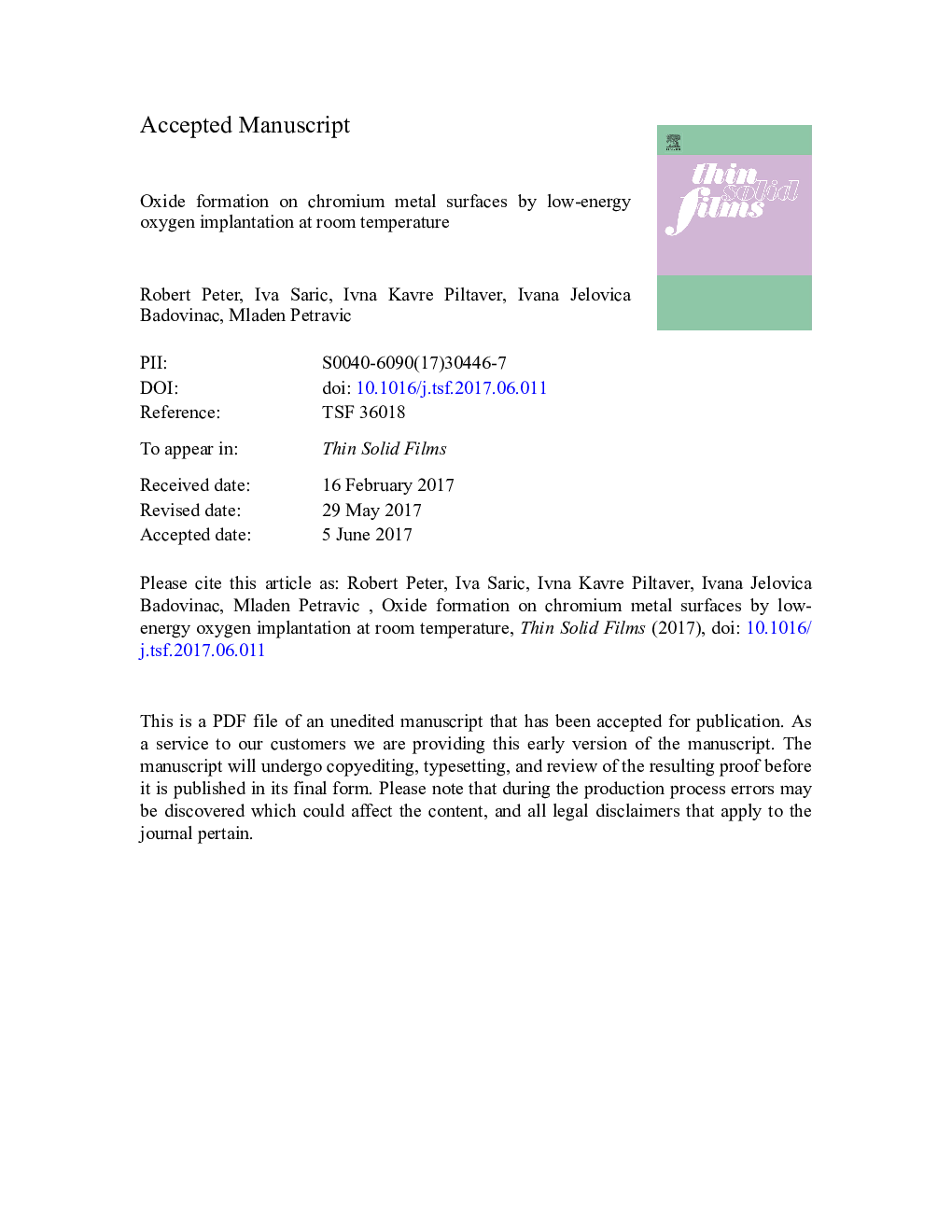| Article ID | Journal | Published Year | Pages | File Type |
|---|---|---|---|---|
| 5466012 | Thin Solid Films | 2017 | 34 Pages |
Abstract
We have studied the formation of oxides on pure chromium metal surfaces by 1Â keV O2+ ion bombardment at room temperature (RT), using X-ray photoemission spectroscopy around Cr 2p or O 1s core-levels and the valence band photoemission. For comparison, we have also examined the oxidation mechanism of thermally oxidized Cr surfaces at RT. The results of thermal oxidation reveal the formation of a very thin, single Cr2O3 oxide with the saturation thickness of 0.7Â nm, obtained after exposure to 10Â L of O2. This layer reduces the reactivity of the surface and prevents any further adsorption or uptake of oxygen at higher oxygen doses. On the other hand, the oxygen-ion bombardment is more efficient in creating thicker Cr2O3 films with the logarithmic increase of film thickness with the implanted dose of oxygen, up to the saturation thickness of about 2.7Â nm. This thickness is in good agreement with the implantation kinetics of oxygen ions in Cr. We explain the observed direct logarithmic growth rate by the radiation-enhanced diffusion of Cr cations and O anions within the oxide film through the open volume defects, such as voids, created by ion bombardment.
Keywords
Related Topics
Physical Sciences and Engineering
Materials Science
Nanotechnology
Authors
Robert Peter, Iva Saric, Ivna Kavre Piltaver, Ivana Jelovica Badovinac, Mladen Petravic,
